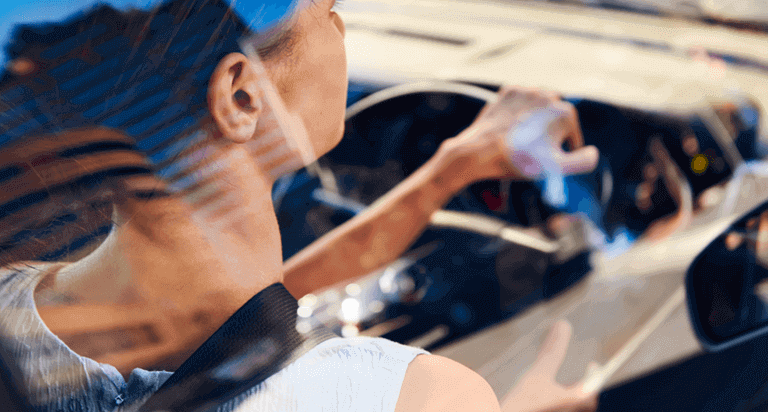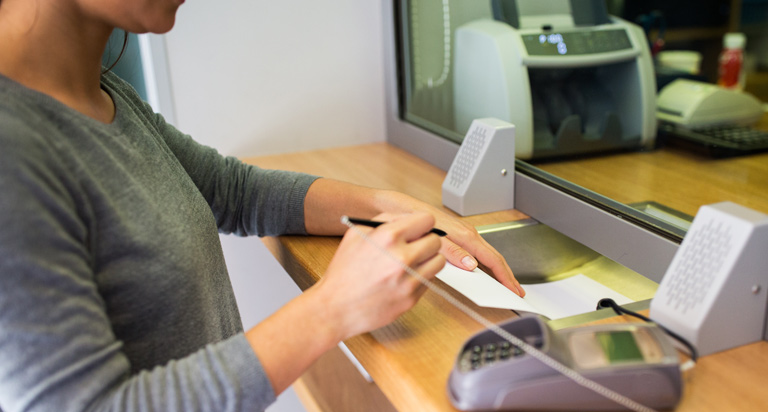How Much Should My Car Down Payment Be?


Highlights:
- The typical down payment for a car is between 10% and 20% of the vehicle's total value.
- Your credit scores may impact the size of your required down payment. Higher credit scores may reduce a lender's down payment requirements.
- The size of your down payment depends on a number of factors, including the cost of the vehicle, its age, your credit scores and other financial details.
When you're in the market for a new car, your down payment can make or break your budget. The size of your down payment depends on a number of factors, including the cost of the vehicle, its age, your credit scores and other financial details.
What is the average down payment on a car?
The typical down payment for a car is between 10% and 20% of the vehicle's total value. Used cars usually require down payments closer to 10%, while the down payment for a brand-new car is generally closer to 20%.
As with a mortgage, the down payment for an auto loan is a major expense. Even if 10% down is out of your price range, you can still sometimes negotiate with lenders to agree on an amount that better suits your finances. You may even qualify for a zero-down auto loan. However, it's generally a good idea to make a larger down payment whenever you're able.
Benefits of a large car down payment
Although not every auto loan requires a down payment, it's usually in your best interest to make one. Why? It all comes down to cost.
A bigger down payment will likely result in a lower interest rate on your auto loan. That's because any cash you supply up front helps decrease the amount of risk to the lender.
A bigger down payment also helps you build equity in your new vehicle. Equity is the amount of money you have invested in an asset, minus the balance on your loan and any other liabilities. Ideally, you will have what's known as positive equity in your vehicle, which means its market value is greater than the amount you owe the lender.
Finally, a bigger down payment can help you save on your loan's total cost. The more you put down up front, the less you'll have left to finance over time. So, a larger down payment may help lower your monthly loan payments and reduce the amount of money you spend on interest.
How to make a low car down payment
Large down payments have many benefits, but they're not affordable for every borrower. Luckily, if you must make a low or zero down payment, you can still take steps to help offset the financial downsides.
Trading in an old vehicle can supplement a small down payment. As long as you have positive equity in your old car, the value of your trade-in can help add to the value of a cash down payment.
Optional gap insurance can help prevent financial loss for a borrower who has not yet built positive equity in their vehicle. For example, if you're involved in a collision before you've established positive equity, standard insurance generally won't cover the difference between the car's original value and what you owe. This means you may be required to repay the remainder of your loan, even if your car is totaled. Gap insurance helps shield you from this out-of-pocket cost.
How do credit scores affect down payments?
Like most loans, your car loan may be directly impacted by your credit scores. Borrowers with higher credit scores generally receive more favorable credit terms, which can translate into smaller monthly payments and lower interest costs over the life of the loan.
Your credit scores may also impact a lender's down payment requirements and your ability to be approved for a loan. Borrowers with the highest credit scores are generally more likely to see the lowest down payment requirements and to be approved for their loan, even with a down payment below the 20% standard.
But how large should your down payment be if you have a negative credit history? Because a down payment can provide a helpful counterweight to low credit scores, it should be as much as you can reasonably afford. In fact, lenders may even require a larger down payment to help offset the risk of a borrower with poor credit.
Coming up with a 20% down payment for your car can be a challenge. However, paying more upfront often saves you money in the long run. If you're looking to buy a new vehicle, aim to create a long-term savings strategy that allows you to set aside a down payment that won't break your budget.

Sign up for a credit monitoring & ID theft protection product today!
For $19.95 per month, you can know where you stand with access to your 3-bureau credit report. Sign up for Equifax CompleteTM Premier today!



